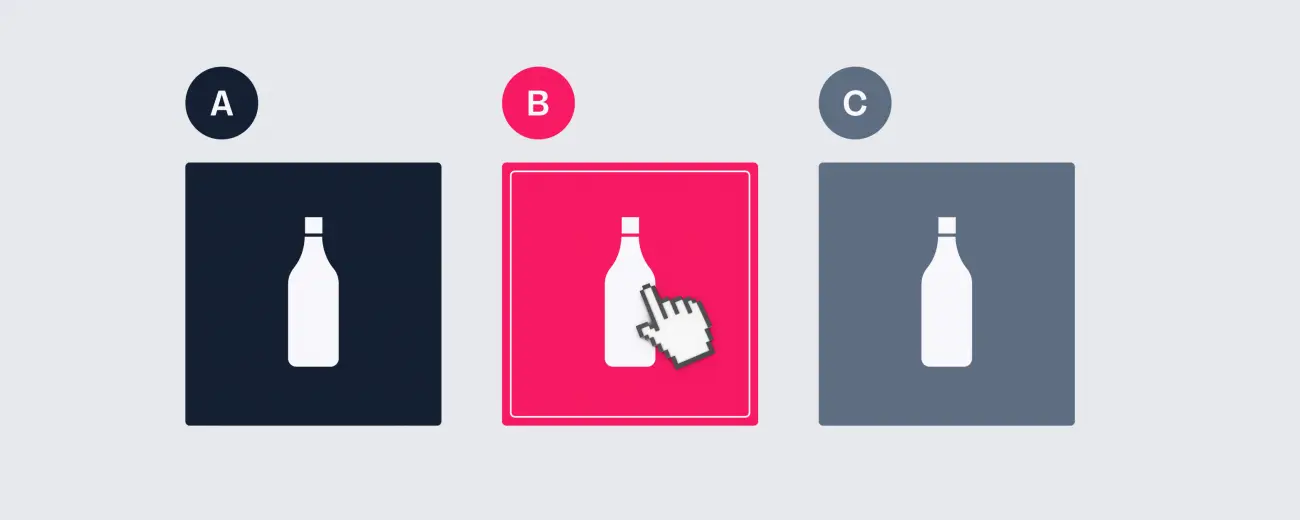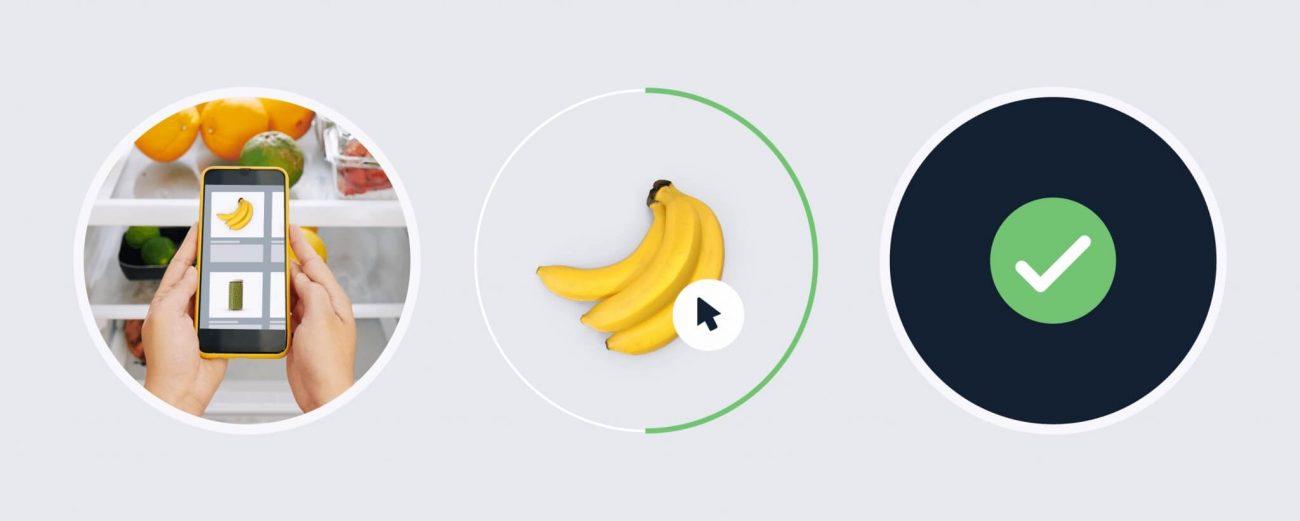In today’s times, after COVID-19 completely changed the grocery game and the behavior of online grocery customers, an agile ecommerce technology and robust customer acquisition techniques are both necessary. However, they’re no longer enough by themselves, not with the increased competition the industry is experiencing online. Therefore, just like the youngest piglet withstood the Big Bad Wolf when its elder brothers failed, so can customer retention strategies be the unexpected warrior fighting a dwindling market share.
The importance of retaining online grocery customers
During the coronavirus pandemic, the grocery industry saw the number of online shoppers soar to new heights. That trend is still upward, but at a diminishing rate, with fewer new registrations happening each month as the market reaches a certain saturation point. Driven by the change in customer behavior, numerous grocery operations either created an ecommerce channel from scratch or optimized an already-existent one to cope with the growing demand.
From this status quo, three big conclusions can be drawn:
1. Industry competition in the online space has never been as fierce.
A year ahead of the pandemic, a Google & Bain whitepaper highlighted how 75% of online grocery shoppers were still choosing the first retailer they tried for online grocery. But options to choose from were way more limited than they are now, giving retailers the false illusion that they are safe from the competition. Nowadays, however, many shoppers are inclined to try out multiple groceries in the search of the service that best meets their needs, not merely one that does the bare minimum. The game of comparison is on and competitors will be pulling out the big guns of customer acquisition.
2. Customer retention is imperative to maintain the current share of the pie.
As the pie is stabilizing its growth and competitors are ramping up aggressiveness, first-time online grocery shoppers won’t be able to completely match a potential loss of existing customers anymore. Generally, plenty of retailers call it a day when the customer acquisition milestone is achieved through hard work and significant investment, dismissing retention as an optional add-on. That risky mindset might have worked in the past, but in the current industry climate it will most likely lead to irreversible customer losses.
A customer retention shield is necessary to protect a grocery ecommerce operation from the incoming onslaught, so it’s high time clever retailers switched strategies: first protect the customer base already acquired and only afterwards think about expanding the share of the pie to acquire new customers.
3. Customer-centricity is the key to high retention rates.
When customers are actively looking for another retailer, they’re only thinking about themselves and the further benefits they can reap by making a switch. Therefore, those at the helm of a grocery’s digital channel need to think similarly in order to identify gaps and opportunities inside a grocery ecommerce operation – “What do my customers want and are not getting?”, “What would surprise and delight them?”, “What do they not even know they want?”. Putting customers front and center will highly differentiate an online grocery operation and will drive long-term brand-loyalty. Win-win!

Retention strategies for online grocery customers
Given the reasons above, we can say that to ignore customer retention is not an option for businesses. But how to improve it?
Based on how COVID-19 accelerated the digitalization of the grocery industry and changed customer behavior, we can highlight some broad yet winning customer retention strategies underpinned by current trends.
Focus on customer convenience
Convenience is becoming a veritable buzzword as more and more shoppers are adding increasing importance to it, driven by the fast pace of today’s society. By default, online grocery shopping seems to be the convenient alternative to in-store shopping but, as we’ve previously discussed, that statement rests on the assumption that the channel is actually well-configured enough to deliver the value customers are seeking; in reality, that doesn’t necessarily happen.
Indeed, only 42% of online grocery shoppers surveyed by Google & Bain said that the experience saves them time, mainly because the user experience is not intuitive and frictionless. Granted, that figure grows to 63% when customers repeat the process three times and gradually get the hang of how it works. Nonetheless, some first-time customers might not be bothered to give online grocery shopping another chance, either in general or with a particular retailer, if the first experience was time-consuming and inconvenient, thereby affecting retention rates.
To avoid that scenario, a good user experience for grocery shopping should mix speed, flexibility and continuity throughout every step of the buyer’s journey.
From the get-go, site performance should be a priority for online grocery retailers and page loading speed in particular should be lightning-fast. According to Google, a site loses around 50% of customers if the load time is longer than 3 seconds. A not-so-good grocery store example in that regard is Instacart, who takes over 25 seconds to perform a single load and search – who has the time for that?
Additionally, the grocery ecommerce store should be optimized for a mobile experience on par with the advanced devices we are using nowadays and the usage trends we are witnessing: users are now spending more time on their mobile phones than on any other device. The translation between channels should always be seamless, though.
From the perspective of features, there should be powerful search, filtering and sorting capabilities to help the customer quickly find exactly what they’re looking for according to what they deem most important (e.g. price, discount, brand, etc) and to offer a customized shopping experience. If the search engine is AI-driven, that’s a goldmine by itself, because it alleviates the impact of typos and understands shopper intent. Allergens, ingredients and nutritional value are increasingly important for shoppers, so a comprehensive product page should contain all that info and the search engine should offer associated filters.
The menu navigation should have a variety of product categories and subcategories for a smoother shopping experience, not to mention special viewing collections like “Last viewed” and “Offers in the last browsed category” based on the users' navigation. Moreover, product bundles are a good method to cut corners in the shopping journey whilst increasing AOV, as are product recommendations based on what other shoppers have already bought or on the current contents of the cart.
The cart, once filled, should be easy to manage. For instance, the customer should be able to quickly adjust the quantity directly from the search engine results. Quantity type should also be flexible for items best purchased by weight (e.g. fruit, meat, etc.). Additionally, the ideal cart would be persistent (i.e. never-expiring, or at least not for the foreseeable future), because no one likes losing the order progress if they accidentally closed the internet tab.

Convenience and retention are also sustained by a secure and flexible payment stage. Firstly, online grocery customers are more likely to come back to a website they deem safe. Secondly, by having their card details securely stored inside their account, they only need a few clicks to place a new order, thus saving precious time. Thirdly, multiple payment options will further drive convenience in the grocery field: debit/credit cards, e-wallets (e.g. Apple Pay, Google Pay, Samsung Pay), meal vouchers from employers and coupons from assistance programs (e.g. SNAP in the US) and potentially even Buy Now, Pay Later solutions the likes of Klarna. The ability to split payments would be the cherry on top.
Without a doubt, fulfilment needs to be flexible and fast. Having multiple fulfilment methods like home delivery, pick-up in-store, curbside pick-up or third-party service delivery (e.g. Deliveroo, UberEats, Rappi) is conceptually great for customers – people like having options. The greatest fulfilment for groceries, however, is the one that happens in a matter of hours or even minutes. Unsurprisingly, 49% of shoppers declare that same-day delivery makes them more likely to shop online.
Furthermore, scheduled deliveries should be timed according to hour slots, not day slots, because otherwise customers will be waiting for their orders for an extended period of time. Setting up the logistics for such a speedy and transparent fulfilment operation without deeply affecting margins is up to the online grocery retailer, but it nevertheless remains imperative, especially as new players like Dija in the UK are capitalizing on this trend and offering 10-minute grocery delivery. The age of speed, largely powered by Amazon, is here.
Last but not least, in case anything goes awry, the customer should be able to get in touch with the customer service team easily and quickly through multiple channels (e.g. a call, an email, a chat box, WhatsApp, etc.). Of course, no matter if it’s an actual person or a bot on the other end of the line, the query should be swiftly solved for that extra touch of convenience.
Enhance direct order recurrence
What better way to ensure retention than through facilitating recurrent orders? What’s even greater about this retention strategy is that an online grocery retailer effectively kills two birds with one stone, as order recurrence can further strengthen customer convenience.

Indeed, repeat ordering should be a mere click away, starting either from an already-placed order or from a digital shopping list. According to the Washington Post, 75% of repeat online shoppers start shopping in the previous basket – failing to provide such a functionality would be irksome. Additionally, a customer account should support multiple shopping lists to be perfectly in sync with an order’s purpose – is it for the usual necessities or is it for a BBQ?
An added layer of convenience would be subscriptions for items that shoppers regularly run out of, such as coffee, detergent, toilet paper, water, pet food, etc. If the customer can set up an auto-replenishment order at the desired frequency, they’ll have a continuous supply. Whilst the customer no longer worries about running out, the retailer obtains a high retention rate due to a model that locks the customer in.
Moreover, loyalty schemes are an effective way of encouraging repeat purchases – who doesn’t love a bargain and a discount? Loyalty schemes can also turn first-time customers into brand advocates, an outcome that is likely to bring in new customers simply through word-of-mouth. The optimal way to devise these programs for hybrid players, however, is with omnichannel in mind, because it’s convenient for the customer to accumulate points and score rewards across all sales channels. To tip the scale in the online’s favor, you can always resort to offering online-exclusives, just like Tía over in Ecuador did.
Provide a personalized shopping experience
We live in an era of hypersonalized advertising and platforms – online grocery shopping should be no different. In fact, customers are expecting and demanding it. An online grocery operation offers an abundance of customer insights that should be leveraged both on a macro level and a micro level.
On top of having sorting and filtering capabilities that allow for the customization of the shopping experience, online grocery retailers should make use of powerful AI algorithms and implement personalized product recommendations that take into account dietary preferences and past orders. Similarly, tailor-made discounts according to customer preferences, shopping frequency and quantities have better odds of triggering a new order. Not only will these strategies boost retention, but they will also increase AOV.

Keep in touch
Following up from the prior sections, however, having features that drive customer convenience, order recurrence and personalized shopping experiences is only half the deal – online grocery retailers should communicate their existence through retargeting campaigns of all kinds. In general, customer communications through email and push notifications can drive up retention significantly by themselves and marketing automation tools offer a seamless way to constantly stay close to online grocery shoppers.
For instance, the aforementioned persistent cart feature offers a basis to issue abandoned cart communications, attracting shoppers back into the store and implicitly recovering up to 10% of lost revenue. Product recommendations can also be leveraged inside regular newsletters. Discounts and rewards accompanying a birthday message, for instance, will do wonders for the retailer-customer dynamic, as will a place for direct customer feedback. Additionally, price alerts and new stock notifications across all digital channels can reactivate dormant shoppers. These are especially beneficial in case the online grocery store also offers high-demand items or high-value ones, like electronics, either through its own inventory or through a marketplace.
Surprise and delight
Once the must-have elements for a great retention strategy have been sorted out, grocery retailers can use innovation to continuously deliver convenience. For example, the no. 1 feature that online grocery customers are vying for is a shareable shopping list that can be edited by multiple people at the same time; next in line is a way to compare prices. A proprietary (transactional or not) mobile app that supports the omnichannel shopper (e.g. finding items in the store, self-checkout scanning) is also highly welcomed, as 68% of grocery customers already have a preference for it. Other ideas would be to integrate third-party recipes and diet programs so that online grocery customers can buy everything they need in one fell swoop.
Innovation can also be used to simply amaze shoppers, which will bring them back to experience the “wow” element first-hand. Zona Sul over in Brazil does this wonderfully, with drone delivery and voice assistant technology. Generally, we do not yet know what the future of grocery will look like, but a desire to shape it is bound to win customers’ appreciation.
Become a brand with a purpose
Consumers increasingly value retailers and brands with a purpose. Defining such a purpose for your brand is worthwhile, especially in tough times like the ones we now live in, because it will offer another reason (or perhaps even the main reason) to come back and shop once again.
Grocers should acknowledge sustainability issues associated with their last-mile delivery operations (e.g. pollution from delivery vans, plastic bags for packaging), for example, and strive to make it better. Clean eating, child nutrition and supporting the local industry are also top-of-mind for progressive customers, so campaigns, messaging and the product offering should regularly reflect them. There are plenty of issues that need addressing in the world of grocery and, largely, in that of retail – making a positive impact on those through corporate means is probably the most gratifying way of developing retention.
Even the smallest actions can reflect your purpose and, besides, they are a sign that grocers are not only promising to contribute, but effectively working on it.
Related Articles
Latest grocery ecommerce trends
